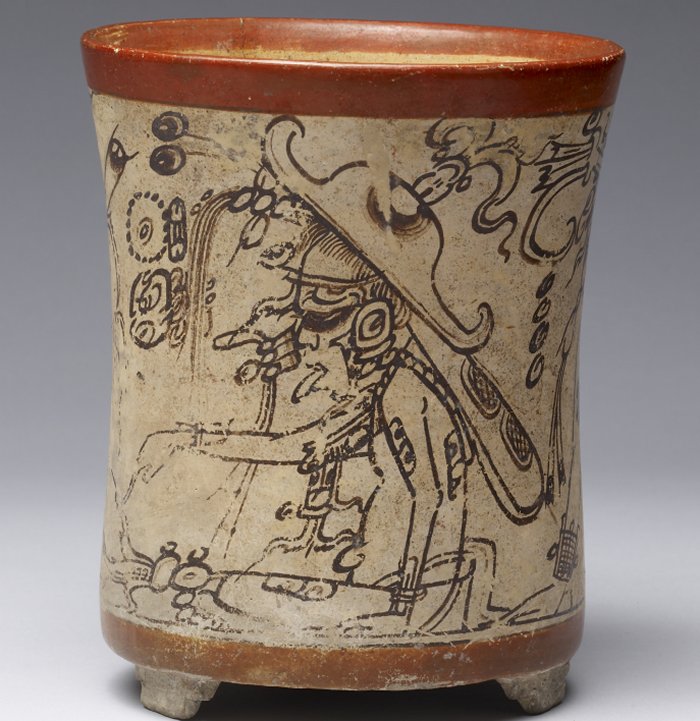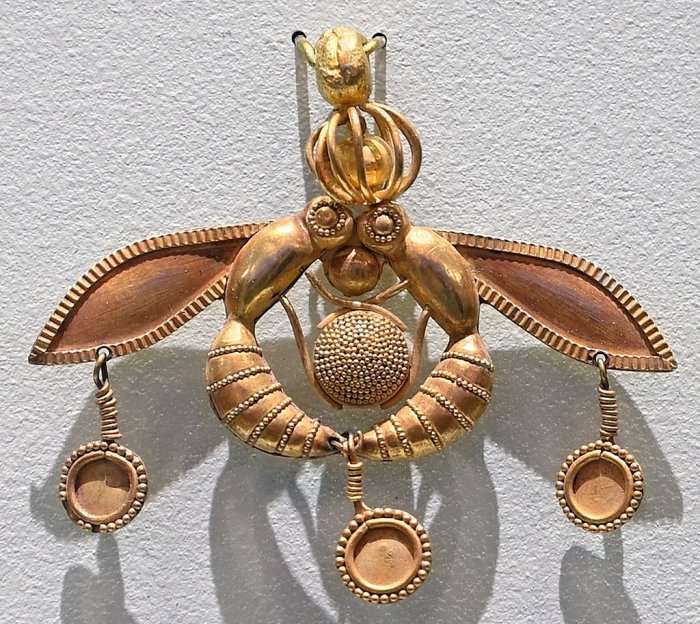Bees – Embodiment Of Human Soul, Divine Messengers Symbolizing Invisible Bridge Connecting Life And Death
A. Sutherland - AncientPages.com - Bees are among the most recognized insects, highlighted in ancient myths and folklore of many cultures worldwide. Both bees and honey have accompanied humanity since the dawn of time. Often called one of the 'most hard-working' animals, bees have been known not only for collecting pollen and producing honey.
Visualization of honey harvest in tube sticks. This picture was taken in the sun temple of Niuserre in Abusir. Image credit: John - Andrew Ginsbury - Public Domain
They were also believed to be divine messengers.
People have bred bees throughout human history, probably since the ancient Egyptians and Greeks. Traditionally, bees are often associated with magic, and their honey is considered a divine gift.
Greek and Roman myths and legends mention these modest and unremarkable insects frequently. In the beliefs of beekeepers, Egypt is the homeland of beekeeping, and the Egyptians thought that the bee flew out of the horns of the Holy Bull, Apis, the most important and highly regarded bull deity of ancient Egypt. It is worth noting that this ancient myth originates from its Latin name, Apis mellifera.
Originally, Apis was a god of fertility and later served as an intermediary between humans and other powerful deities like Ptah, Osiris, and Atum.
Additionally, in ancient Egypt, bees symbolized the Lower Kingdom of Egypt and the united kingdoms of Egypt in later times. People believed the first bees were created from the tears of the sun god Ra as they fell upon the desert sand.
Gold plaques embossed with winged bee goddesses, perhaps the Thriae or an older goddess, found at Camiros, Rhodes, dated to the 7th century BCE (British Museum). Credits: Unknown artist - Jastrow - Public Domain
Egyptian hieroglyphs describe how to use beehives. We find the earliest known reference to beekeeping on the walls of the Egyptian sun temple of Ni-user-re at Abusir, dated to about 2400 BC. Scientists think this ancient Egyptian interest in beekeeping probably evolved due to the belief that the bee originated from the Sun god, Ra.
Hebrew, Greek, and Hindu mythologies did not ignore the importance of bees and honey, and in Mayan mythology, Ah-Muzen-Cab is one of the Maya gods of bees and honey. In the Popul Vuh, the sacred book of the Maya Indians, one of the legendary Maya Hero twin gods, Xbalanque, is also associated with bees and beekeeping under the name or aspect of Mok Chi'.
Famous and essential is ancient guidance given by King Solomon, who is said to have ruled Israel after King David and was renowned for his wisdom and riches. Solomon said: "eat honey, son, for it is good and will prolong the days of your life."
Honey was supposed to come from the underworld. On the other hand, Pliny claimed that sweat always fell from the sky before dawn.
Beliefs in the importance of bees come from Indian myths and legends and Aegean and Near East cultures. The people in these parts believed the bees were sacred insects that connected the natural world to the underworld. The passage, unharmed by swarming bees in the Greek countryside, was considered a sign of virginity and purity.
Ancient Greeks had several gods associated with bees in their pantheon; evidently, prophecy in this ancient land was often related to bees.
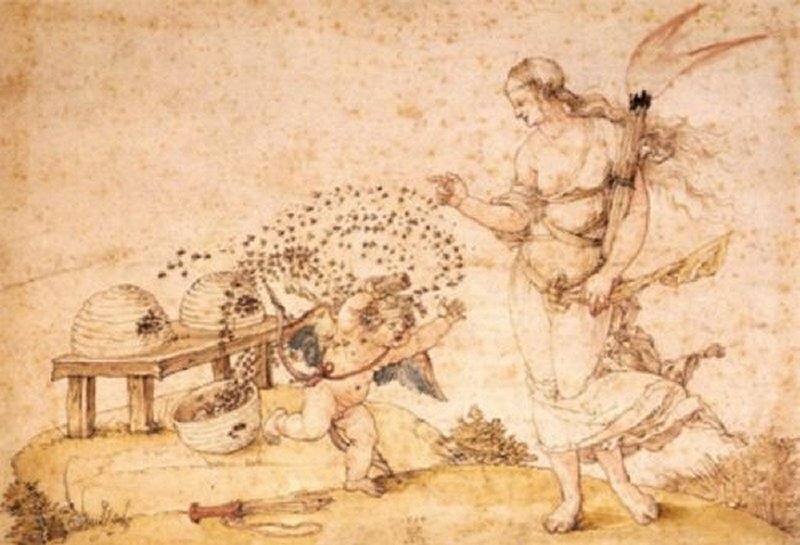 Cupid the Honey Thief by Albrecht Durer, 1514. Credit: Public Domain
Cupid the Honey Thief by Albrecht Durer, 1514. Credit: Public Domain
In one of the Homeric Hymns dated 600-500 BC, Hermes confirms that Apollo's gift of prophecy first came to him from the Thriae, three bee-maidens known as Naiads.
The Naiads (freshwater nymphs) originated from the sacred springs of the Corycian Cave of Mount Parnassus in Phocis, at 1.360 m. and above the town of Delphi and the bees' patrons.
Their depictions showed them with women's heads, torsos, and lower bodies and wings of a bee.
These pre-Hellenic bee goddesses in the Aegean offered Apollo the gift of prophecy.
The folk wisdom from ancient European cultures also gives some good advice regarding these insects, saying that they must know about all the crucial events in the family, like weddings and funerals. Otherwise, they will leave the hive, follow the deceased, or become extinct.
Mok Chi', the patron deity of beekeepers, on a codex-style Maya vessel. – Public Domain
In European folklore traditions, it was essential to contact bees in their hive, inform them about events in the family (especially births and deaths), and remember their existence by bringing them a piece of wedding cake.
This friendly attitude was vital to keep them content and happy in their hive, and this old and popular custom has its name: "Telling the bees."
In Biblical legends, bees were "little servants of God" and the first inhabitants of the biblical heaven. Christianity has even seen similarities between bees and Christ-just like the savior, they die (fall asleep for the winter) and rise again (wake up in the spring).
The ancient gods not only ennobled bees making them their divine messengers. They did the same med honey, which in legends was the food of the sun. In Greek mythology, it was a component of nectar, the drink of the Olympian gods, and Ambrosia, their food. Honey is traditionally given to the spirits of the dead.
The Babylonians and Persians used honey – as a symbol of eternal happiness – to embalm corpses. The Greeks put the honey cake into the graves and the pain in the deceased's mouth. It was supposed to bribe the guardian of the underworld, Cerberus.
Bee pendant excavated from the Minoan Chrysolakkos necropolis at Malia, 1800-1700 BC, Isle of Crete, Greece. The pendant consists of two bees depositing a drop of honey in their honeycomb. They are holding the round honeycomb between their legs and the drop of honey in their mouths. On their heads, the bees carry a delicate cage containing a golden bead. Small discs hang from their wings and stings. Size (width) 4.6 cm. Archaeological Museum of Heraklion: Image credit: Cayambe - CC BY-SA 4.0
This article cannot mention all the characteristics of bees and give many examples of how crucial they are to people and nature. It is worth noting that these creatures are considered the embodiment of human souls, and as such, they are not allowed to kill or curse.
The ancient writer Lucius Columella (1st century), a Roman soldier, farmer, and prominent writer on agriculture in the Roman Empire, stated that bees, naturally pure, recognize liars and other depraved individuals.
However, their appearance may indicate death. According to one of the ancient beliefs associated with these insects, if they are born in the house's living quarters or other surrounding spaces, it can mean that they have come to take someone from the household to a different world.
But although they accompany death, they are guides of souls, showing the dead the way to the underworld.
Therefore, they should be considered an important link, perhaps an invisible bridge connecting life and death.
Written by – A. Sutherland - AncientPages.com Senior Staff Writer
Updated on April 11, 2024
Copyright © AncientPages.com All rights reserved. This material may not be published, broadcast, rewritten or redistributed in whole or part without the express written permission of AncientPages.com
Expand for referencesReferences:
Scheinberg, Susan. "The Bee Maidens of the Homeric Hymn to Hermes." Harvard Studies in Classical Philology 83 (1979)
David Grimaldi, Michael S. Engel, Evolution of the Insects
More From Ancient Pages
-
 The Hobbit – An Ancient Hominin Species May Still Be Living In The Forests Of Flores Island – Anthropologist Says
Archaeology | Apr 20, 2022
The Hobbit – An Ancient Hominin Species May Still Be Living In The Forests Of Flores Island – Anthropologist Says
Archaeology | Apr 20, 2022 -
 35,000 Unique Artifacts Discovered In 720-Year-Old Iroquoian Village In Canada
Archaeology | Oct 24, 2020
35,000 Unique Artifacts Discovered In 720-Year-Old Iroquoian Village In Canada
Archaeology | Oct 24, 2020 -
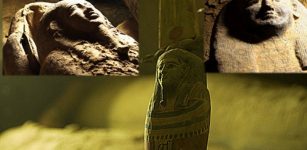 Collection Of 2,500 Years Old Sealed Coffins Unearthed In Saqqara, Egypt
Archaeology | Sep 8, 2020
Collection Of 2,500 Years Old Sealed Coffins Unearthed In Saqqara, Egypt
Archaeology | Sep 8, 2020 -
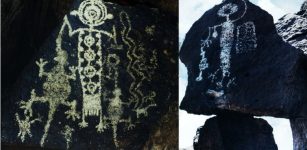 Mysterious Coso Petroglyphs In California – Made By Whom And For What Reason?
Featured Stories | Dec 31, 2020
Mysterious Coso Petroglyphs In California – Made By Whom And For What Reason?
Featured Stories | Dec 31, 2020 -
 Prehistoric Spread Of Millet From East Asia To Central Europe – New Study
Archaeology | Jun 10, 2022
Prehistoric Spread Of Millet From East Asia To Central Europe – New Study
Archaeology | Jun 10, 2022 -
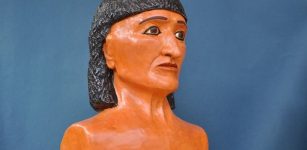 Researchers reconstructed face of oldest pharaonic mummy ‘Kent’
News | Sep 1, 2015
Researchers reconstructed face of oldest pharaonic mummy ‘Kent’
News | Sep 1, 2015 -
 Rare 13,000-Year-Old Artifacts And Paleoindian Camp Uncovered in Connecticut Shed New Light On The First Ancient People In America
Archaeology | Mar 18, 2022
Rare 13,000-Year-Old Artifacts And Paleoindian Camp Uncovered in Connecticut Shed New Light On The First Ancient People In America
Archaeology | Mar 18, 2022 -
 11th-Century Pratihara-Era Temple Accidentally Found By A Farmer In Uttar Pradesh, India
Archaeology | Aug 6, 2020
11th-Century Pratihara-Era Temple Accidentally Found By A Farmer In Uttar Pradesh, India
Archaeology | Aug 6, 2020 -
 Neanderthals: How A Carnivore Diet May Have Led To Their Demise
Featured Stories | Nov 7, 2022
Neanderthals: How A Carnivore Diet May Have Led To Their Demise
Featured Stories | Nov 7, 2022 -
 Killer-Of-Enemies – Mysterious Non-Human Teacher And Hero Of The Apache Indians
Featured Stories | Nov 16, 2020
Killer-Of-Enemies – Mysterious Non-Human Teacher And Hero Of The Apache Indians
Featured Stories | Nov 16, 2020 -
 Napoleon Bonaparte’s Nightmare Vision Inside The Great Pyramid
Featured Stories | Jul 12, 2014
Napoleon Bonaparte’s Nightmare Vision Inside The Great Pyramid
Featured Stories | Jul 12, 2014 -
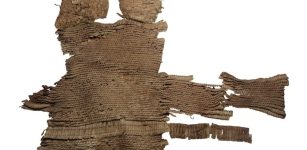 2,700 Year Old Equestrian Armor In Assyrian-Style Leather Evidence Of Technology Transfer In Antiquity
Archaeology | Dec 9, 2021
2,700 Year Old Equestrian Armor In Assyrian-Style Leather Evidence Of Technology Transfer In Antiquity
Archaeology | Dec 9, 2021 -
 1,200-Year-Old Rock-Cut Temple Found On Banks Of Arjuna River,Tamil Nadu, India
Archaeology | Sep 3, 2020
1,200-Year-Old Rock-Cut Temple Found On Banks Of Arjuna River,Tamil Nadu, India
Archaeology | Sep 3, 2020 -
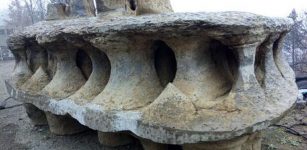 Curious Giant Shaped Rock In China – An Ancient Man-Made Construction Or Natural Formation?
Featured Stories | Jun 26, 2017
Curious Giant Shaped Rock In China – An Ancient Man-Made Construction Or Natural Formation?
Featured Stories | Jun 26, 2017 -
 Lost Ancient Pyramid City As Big As Manhattan Discovered In Mexico
Archaeology | Feb 17, 2018
Lost Ancient Pyramid City As Big As Manhattan Discovered In Mexico
Archaeology | Feb 17, 2018 -
 More Than 2,500 Years Old Gallic Tombs Unearthed In Nîmes, Southern France
Archaeology | Aug 17, 2020
More Than 2,500 Years Old Gallic Tombs Unearthed In Nîmes, Southern France
Archaeology | Aug 17, 2020 -
 Giant Spider Yokai Tsuchigumo Confronts Minamoto No Yorimitsu And Something Strange Happens
Myths & Legends | Mar 23, 2024
Giant Spider Yokai Tsuchigumo Confronts Minamoto No Yorimitsu And Something Strange Happens
Myths & Legends | Mar 23, 2024 -
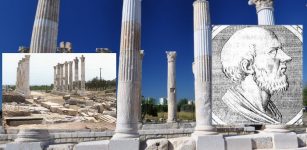 Archaeologists Focus On Greek Poet Aratus’ Memorial Tomb And Ruins Of Soli Pompeiopolis
Archaeology | Aug 12, 2020
Archaeologists Focus On Greek Poet Aratus’ Memorial Tomb And Ruins Of Soli Pompeiopolis
Archaeology | Aug 12, 2020 -
 Sunken 18th-Century British Warship HMS Tyger Found In The Dry Tortugas National Park, Florida
Archaeology | Mar 19, 2024
Sunken 18th-Century British Warship HMS Tyger Found In The Dry Tortugas National Park, Florida
Archaeology | Mar 19, 2024 -
 Is ‘Someone’ Regularly Altering The Course Of History? – Is So How, Why And Who? Part 1
Ancient Mysteries | Nov 30, 2020
Is ‘Someone’ Regularly Altering The Course Of History? – Is So How, Why And Who? Part 1
Ancient Mysteries | Nov 30, 2020



